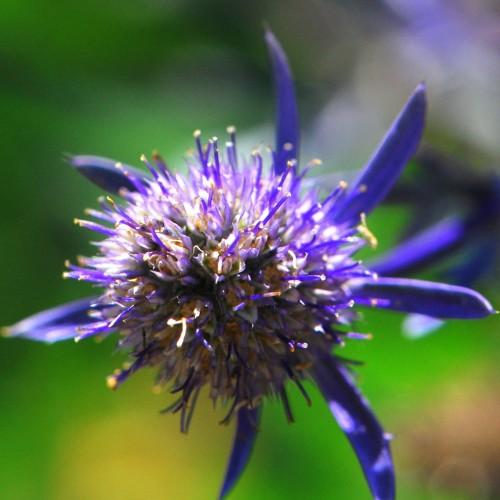
sea holly
Eryngium planum 'Jade Frost'
Cycle:
Herbaceous Perennial
Watering:
Minimum
Hardiness Zone:
5 - 8
Flowers:
Flowers
Sun:
Full sun
Growth Rate:
Low
Maintenance:
Low
Salt Tolerant:
Yes
Care Level:
Moderate
watering
Sea holly (Eryngium planum 'Jade Frost') should be watered liberally and regularly. During the summer growing season, it should be watered deeply once every week or 2. During the winter growing season, when the temperatures dip, it may only need to be watered once a month. It is important to ensure the soil is allowed to dry slightly between waterings, as sea holly plants don’t like to stay wet for long periods of time. If the soil feels cool to the touch, it is okay to water. If the soil feels warm, the plant may not need additional water.
sunlight
Sea holly 'Jade Frost' should be grown in full sun, meaning that it should receive at least 6 hours of direct sunlight each day. It should be planted in an area with abundant and direct sunlight, as this plant will flower best when exposed to as much sunlight as possible. During the winter months, this plant needs less sunlight because of fewer days of daylight. Anytime temperatures are unusually high or cold, the amount of sunlight should be reduced. However, during the summer months, this plant should get as much sun as possible.
pruning
For Sea Holly (Eryngium Planum 'Jade Frost'), the best time to prune is in late winter. This gives the plant ample time to enjoy the remaining days of winter and to get prepared for spring. Pruning should be done after the snow has melted and the ground has started to thaw. This way, the new shoots will have an easier time emerging from the ground. When pruning Sea Holly, it is important to focus on thinning out the plant rather than completely removing the entire branch structure. These plants prefer light, airy pruning rather than heavy, severe cuts. Specifically, remove any dead, diseased, or damaged stems as well as any stems that are growing in an undesirable location. In addition, thin out the larger, thicker stems to promote bushier, more uniform growth.
